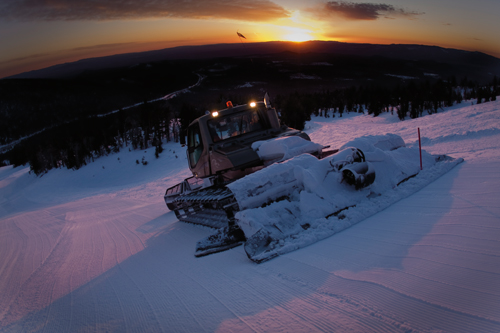 Money fell early from the sky for many of the state’s winter sport hot spots, but rain and warm weather have melted what may have been a promising season for robust sales.
Money fell early from the sky for many of the state’s winter sport hot spots, but rain and warm weather have melted what may have been a promising season for robust sales.
 |
Mt. Bachelor’s snow pack was at 55 inches in early January; 100-150 inches is normal.PHOTO COURTESY OF MT. BACHELOR |
Money fell early from the sky for many of the state’s winter sport hot spots, but rain and warm weather have melted what may have been a promising season for robust sales.
Many of the state’s ski resorts opened at least one month early to take advantage of the early snowfall. Dave Tragethon, marketing director for Mount Hood Meadows, says that gave Mount Hood Meadows a jump on sales that had suffered from the recession.
Alex Kaufman, director of marketing at Mt. Bachelor near Bend, says the snow pack on the mountain has “receded a bit” as a result, but “weather hiccups” are something that ski resorts always plan for and expect. The few days of rain from mid-January also do not make opening a month early a bad financial decision. Mt. Bachelor’s snowpack was at 55 inches on Jan. 11; normally it would be between 100 and 150 inches.
“Being open early is different than a couple of days of rain,” he says. “That provides a lot of momentum and gets the phone ringing.”
John Tullis of Timberline Lodge says the rain — unusual for this time of year — compacted the snow pack, making for better skiing. “You just never know what happens in the ski season,” Tullis says. Timberline’s snowpack was at 70 inches on Jan. 11, “a little behind average,” according to Tullis.
Tullis says that he still expects to finish the season with better lodging numbers than last year despite the recent warm weather. Over the Christmas holidays, Timberline Lodge was at 100% occupancy. Currently, he estimates it is at 80% occupancy, which is a normal slump during the time period immediately after the holidays.
Rick Saul, marketing director for Mt. Ashland, said the early snowstorms did not affect Mt. Ashland because they were coming from the north. A storm around New Year’s added 17 inches to the snowpack, which almost immediately melted after two days of rain. Mt. Ashland’s snowpack, at 90 inches, is well below the average of 280 cumulative inches.
Sales for Mt. Ashland’s after-school ski programs are “down a little bit from last year,” although Saul blames that on district budgeting and changes in school hours.
Karen Siegle, executive director of Ski Oregon, predicts the winter tourism season likely will continue to have momentum because of the 2010 Olympics in Vancouver, B.C. “That is a boon to our industry,” Tullis says.


